A magnet is an object that can attract or repel other magnets and can attract substances made from iron |\text{(Fe)},| cobalt |\text{(Co)},| nickel |\text{(Ni)},| or an alloy of these metals.
The elements |\text{Fe},| |\text{Co}| and |\text{Ni}| are ferromagnetic. In other words, they become magnetized when exposed to a magnetic field and may retain some of their magnetic properties after the magnetic field is removed.
These metals can be used to manufacture permanent or non-permanent ferromagnetic objects.
Magnets are permanent ferromagnetic objects.
To make a magnet, the ferromagnetic metal or alloy can be melted and then poured into a mold. It is then left to cool slowly inside a powerful magnetic field.Once cooled, the contents are removed from the mould to create a magnet.
Regular objects containing iron, cobalt, or nickel are non-permanent ferromagnetic objects.
These objects are not magnets, because they cannot attract or repel. They can only be attracted by another magnet. For example, a paper clip cannot attract or repel another paper clip, but is attracted by a magnet. A paper clip is therefore a non-permanent ferromagnetic object.
Although magnets vary in shape and size, they always have a north pole and a south pole.
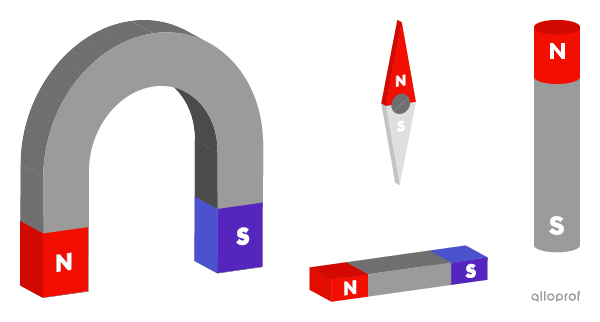
When magnets are placed close together, we notice the following effects:
- Two opposite poles attract each other
- Two like poles repel each other

Opposite poles (south-north) attract each other.

Like poles (north-north) repel each other.
The attraction or repulsion between two poles is due to the magnetic field exerted by the magnets.
A magnetic field is the space in which the magnetic forces (attraction/repulsion) are exerted by a magnet or a moving electric charge.
The magnetic field of a magnet is not visible to the naked eye, but it can be represented by arrows called magnetic field lines.
- Outside the magnet, the magnetic field lines run from the north pole to the south pole.
- The closer the magnetic field lines are to each other, the stronger the magnetic field is.
- Magnetic field lines do not cross.
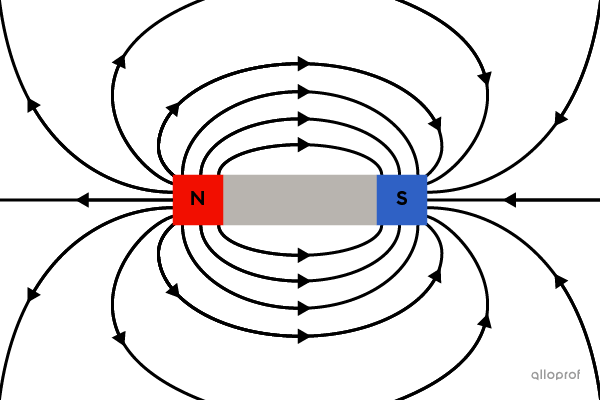
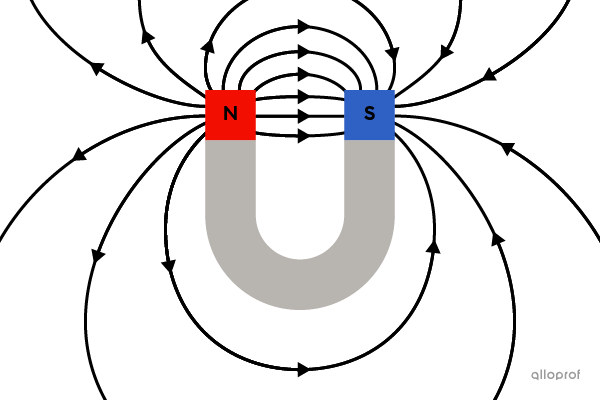
When iron filings are sprinkled around a magnet, they scatter and take on the shape of magnetic field lines.
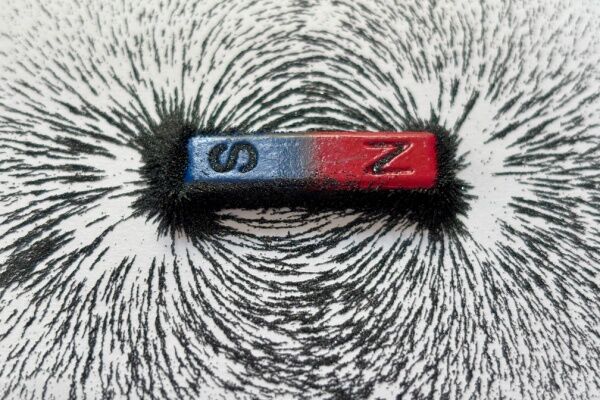
Source: Probowening, Shutterstock.com
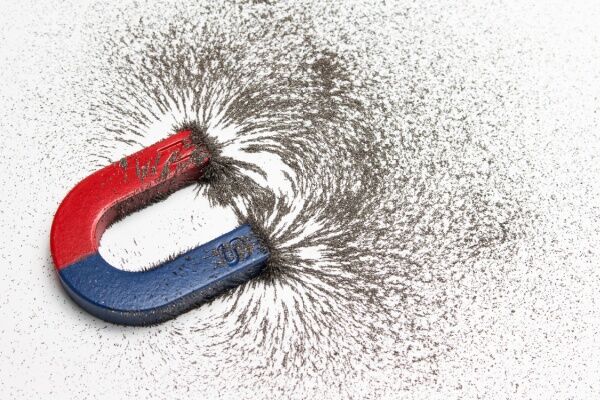
Source: ShutterStockStudio, Shutterstock.com
One of the things magnetic field lines help us understand is the attraction or repulsion between two poles.
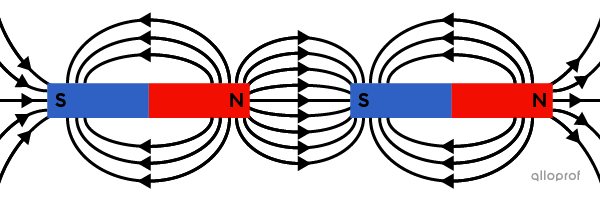
Opposite poles (north-south) attract each other.
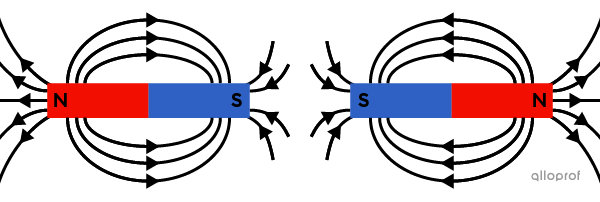
Like poles (south-south) repel each other.
Because a compass’ needle is a magnet, we can see the effect a magnetic field has on it.
Move the compass around the bar magnet and observe how the needle behaves.
In the previous animation, we can see that:
- The north pole of the compass is attracted by the south pole of the magnet
- The south pole of the compass is attracted by the north pole of the magnet
- The magnetic field lines around the magnet have the same orientation as the north pole of the compass
Earth’s magnetic field, also known as the magnetosphere, is the magnetic field exerted by Earth’s outer core.
The Earth’s outer core is made up of iron |\text{(Fe)}| and nickel |\text{(Ni)}| in a liquid state, among other things. Their convection movements generate electrical currents and a magnetic field similar to that of a bar magnet.
If we imagine Earth’s outer core as a bar magnet, its south pole would be aligned with a point historically called the North Magnetic Pole. This means that the so-called North Magnetic Pole actually behaves like a south magnetic pole.
A compass needle naturally follows the lines of Earth’s magnetic field.
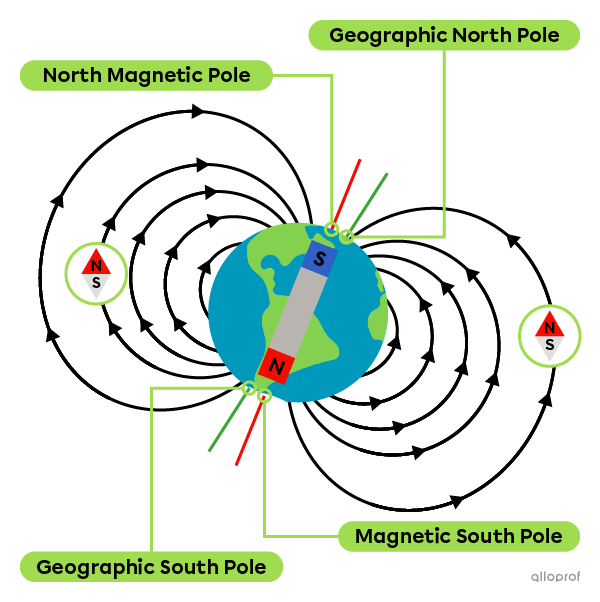
Earth’s magnetic field prevents most of the solar wind’s harmful particles from reaching our atmosphere. However, it does deflect a small quantity of these particles towards Earth’s poles, especially when solar activity is intense.
The interaction between these solar wind particles and Earth’s atmospheric gases leads to the formation of polar auroras.